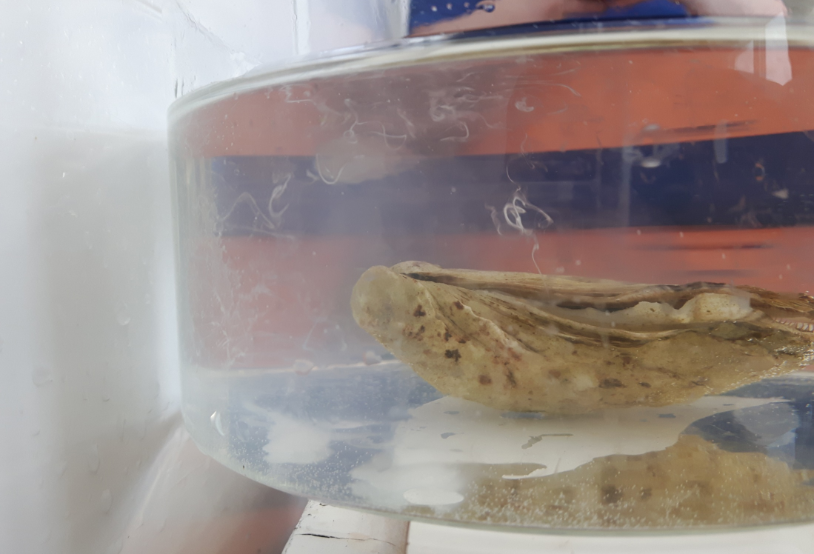

In Spring, oyster spawning becomes more regular and usually occurs on the second and sixteenth days of the Chinese lunar calendar. (2012) used principal component analysis (PCA) to identify the major sources of influence on coastal waters and reported that the coastal area was mainly affected by riverine discharge and seasonal changes (specifically transparency, turbidity and temperature). The additional environmental data may be to compare oyster settlement to local conditions, rainfall, river flow and look for potential correlations.Īdditional environmental data, such as temperature, salinity and rainfall, would allow scientists to identify potential correlations between oyster settlement and the local conditions and to determine the effects of tide and rainfall on oyster settlement. Some researchers have argued that rainfall affects the water temperature, salinity and reduces the pH of the estuary, but predicting how much the winter rains would affect the summer salinity levels is difficult. For example, a strong correlation was found between monthly pH values and oyster spat density along the southwest coast of India. The seasonal and monthly variations of salinity, temperature, and pH have been related to variations in the settlement of meroplanktonic oyster larvae.


Oysters of the genus Crassostrea in general had the ability to adapt well to temperature fluctuations and their larvae also generally exhibit a wide tolerance of temperature fluctuations. In Taiwan, fishermen remove rock shells and barnacles manually, but they do not remove other fouling organisms.ġ.3. Organisms that live on the shells of these oysters include barnacle Amphibalanus spp., rock shell Thais clavigera, dove shell Mitrella bella, mussel Modiolus auriculatus, and pea crab Arcotheres sinensis. Oyster farming contributes substantially to the local economy, and the Portuguese oyster is the primary species being cultivated. The coast along Taisi Township, Taiwan is a crucial oyster culture zone and source of oyster larvae. These and other benthic predators, such as sea anemones, barnacles, and ascidians, feed on oyster larvae or oyster veliger, thus limiting oyster larval settlement. īarnacles feed on a wide variety of planktonic organisms ranging in size from flagellates to small crustaceans. Temperature and salinity affect barnacle spatfall similarly to oyster larvae. Barnacles are one of these sessile fouling organisms commonly found on oyster clusters and can cause problems for oyster culturists.

In addition, oyster spatfall is influenced by competition between oyster larvae and larvae of other species, such as sessile or fouling organisms. Settlement or spatfall is a vital event in the life cycle of oysters, and temperature and salinity influence oyster spatfall. The Portuguese oyster has a wide distribution in subtropical Taiwan and southern China. Studies have shown that the two oysters also differ in their filtration rates, activity levels at low temperatures, and growth rates. The Pacific oyster is native to temperate waters close to Japan and Korea, whereas the Portuguese oyster is found in the waters surrounding Taiwan. The Pacific oyster and the Portuguese oyster Crassostrea angulata (Lamarck 1819) were considered a single species until recently when molecular biology studies proved otherwise. The Pacific oyster Crassostrea gigas (Thunberg 1793) is a well-known commercial oyster cultivated in many countries and areas, including the United Kingdom, Japan, Korea, Australia, and Taiwan. Oyster aquaculture is widely distributed in the world and provides high economic value. Although the oyster larvae are more abundant in spring, fishermen prefer harvesting the larvae in autumn to avoid the typhoon season (July - September). There are two main culturing seasons that move oyster larvae from coast of Taisi to farms in other places: from March to May and from August to September. angulata and barnacle settlement, the eigenvalue of PC1 was 1.83 and could explain 61.0%. Rainfall was the major factor that influenced oyster C. The primary of adherence spawning season of barnacles was from March to October. The primary spawning season was from March to September. The average adherence density of the barnacle larvae was 187.1 ± 251.2 individuals/shell (N = 60) at site A and 60.9 ± 112.5 individuals/shell (N = 37) at site B. The average recruitment density, measured once every two weeks, of the oyster larvae was 256.4 ± 236.6 individuals/shell (N = 62) at site A and 118.5 ± 140.2 individuals/shell (N = 39) at site B. This study investigated oyster cultures at two locations along the coast of Taisi Township from March 2012 to July 2014. The Portuguese oyster ( Crassostrea angulata ) is an important fishery resource in Taiwan.


 0 kommentar(er)
0 kommentar(er)
